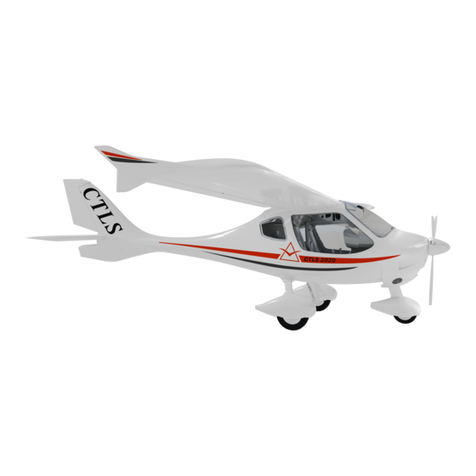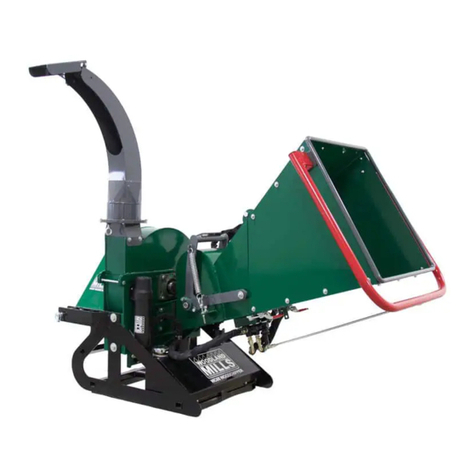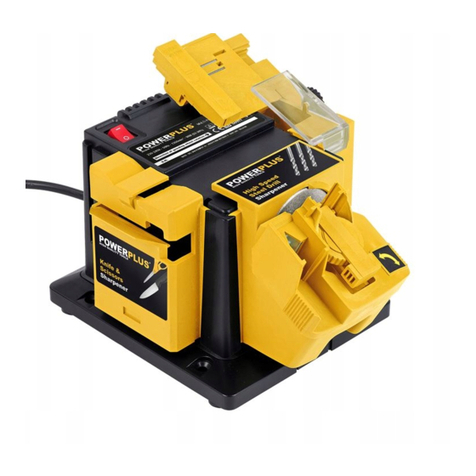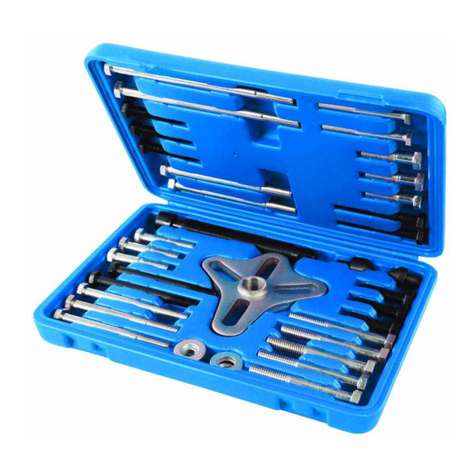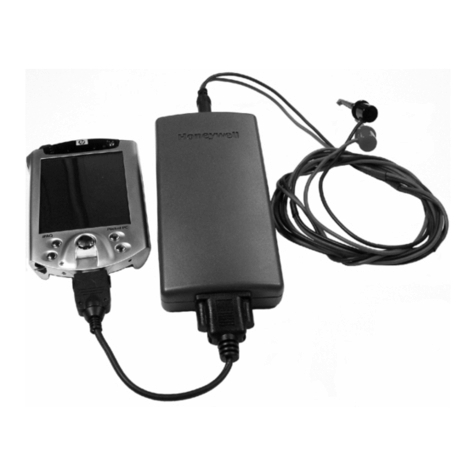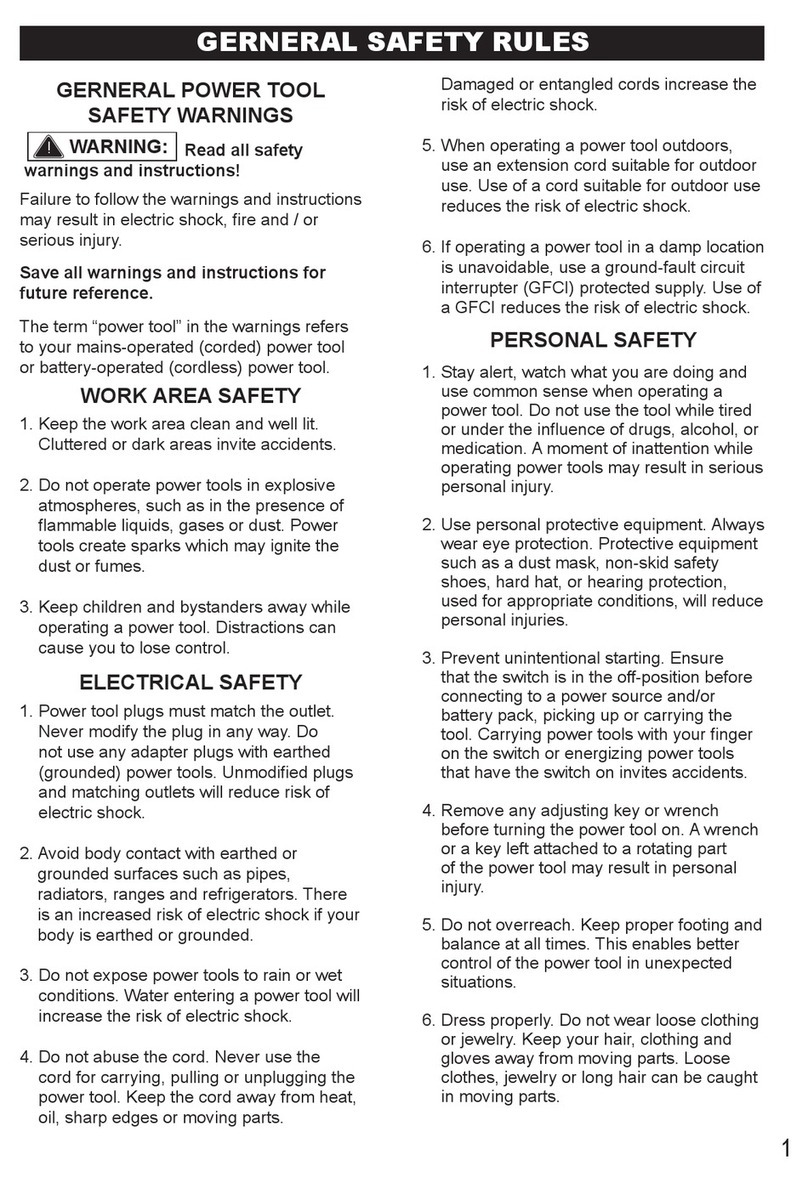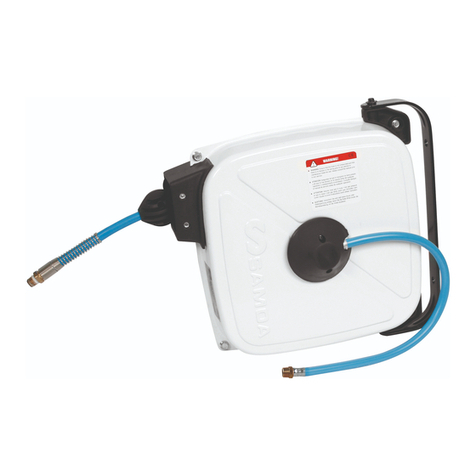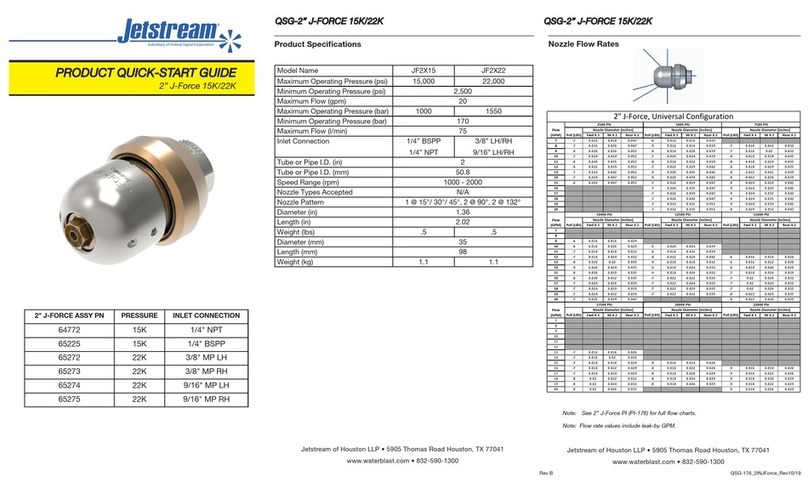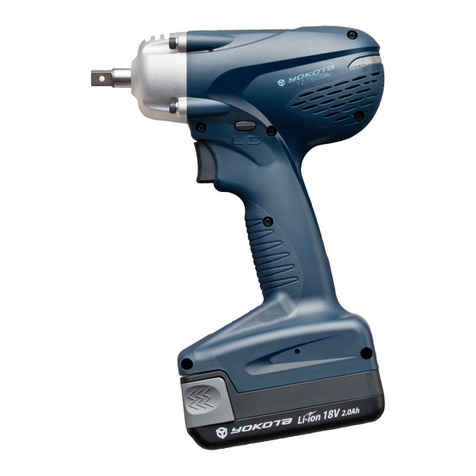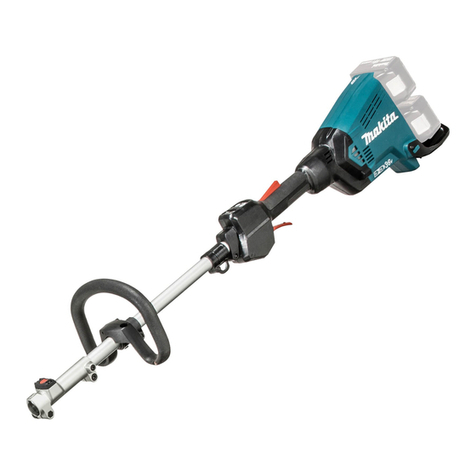TORQUE SAFE TORQUE SAFE User manual

1 | Page
Operations Manual
TORQUE SAFE TM
2015
PLEASE READ CAREFULLY BEFORE USE
www.ogoncontracting.com.au

2 | Page
Operations Manual
Torque Safe
Torque Safe is a handle operated safety device designed to fit Hydraulic Torque
Wrench’s and give operators greater control and prevent hand injuries.
To operate Torque Safe correctly, operators must squeeze the handle down by
placing both hands on the Hydraulic Torque Wrench.
This includes when positioning the Hydraulic Torque Wrench, removing the
tool from a bolt or any other task requiring hands to be on the tooling.
(Diagram handle depressed)
The Blue in the above diagram shows the oil flow being looped between the two
hose ports and returned back to the oil tank under low pressure.
Depressing the handle closes ports which supply oil to the Hydraulic Torque
Wrench, and loops the oil flow back through the hoses to the tank. By closing
this off with Torque Safe, the button which activates the Hydraulic Torque
Wrench will be inactive, which stops the tool driving, thus eliminating any
possible hand crushing injuries.
General Operating Instructions
The purpose of this manual is to provide basic instructions to safely operate a
Hydraulic Torque Wrench equipped with Torque Safe.
Please read this manual carefully and follow instructions provided herein.
When selecting a socket for a Hydraulic Torque Wrench use only approved
impact sockets. Failure to do so may result in the socket breaking under
pressure and causing personal injury.

3 | Page
Operations Manual
General Operating Instructions (continued)
The recommended PPE requirements to be used are safety glasses, gloves,
steel cap boots, long pants and a long sleeve shirt.
If a Job requires two operators, before commencing work, a clear work plan
should be established between the two.
Working Pressure
A Hydraulic Torque Wrench has a maximum working pressure of 10,000 psi.
Check that all hydraulic equipment (pumps, hoses, couplers) are rated for
10,000 psi working pressure and are free of any damage and are in good
working condition.
Review the hydraulic pump documentation to ensure maximum working
pressure does not exceed 10,000 psi.
Hydraulic Torque Wrench Connection
When using hydraulic hoses for a Hydraulic Torque Wrench and pump ensure
they are at the correct pressure rating of 10,000 psi. Also ensure they have
safety couplers which prevents the hoses from accidently coming loose.
Connect the twin line hose by connecting the male couplers to the female
couplers. Ensure the connections are fully engaged and tightened to the final
thread.
Loose or improperly threaded couplers will prevent the tool from operating
correctly and can be potentially dangerous if pressurised.
Couplers are to be hand tightened only, DO NOT USE PLIERS. Over tightening
of couplers could cause thread failure. To loosen the couplers, push the
couplers together, which pushes the spring loaded part inside the coupler, and
turn clockwise. A small amount of oil will drip from the couplers on
disconnection, this is normal.

4 | Page
Operations Manual
Electrical Connections
Ensure there is correct power availability and use recommended amperage
listed on the motor nameplate. Failure to do this could result in motor failure
from electrical overloading.
Ensure correct electrical tagging and testing has been performed. Minimise
length of any extension cords, ensuring all power outlets and extension cords
have ground outlets. As electrical motors may spark, do not operate in the
area of combustible liquids.
Air Connections
Ensure you have sufficient airflow and pressure. You will require 60-100 psi to
operate the pneumatic pump. Check manufactures recommended air pressure
ratings on the pump.
Ensure correct rated pressure air hoses are used and have an internal diameter
of 19mm. A filter regulator, lubricator and water trap is recommended.
Functional (Operational) Check
Before using any Hydraulic Torque Wrench a function check must be carried
out.
Ensure the Hydraulic Torque Wrench is connected correctly.
Turn on the pump operating the Hydraulic Torque Wrench ensuring there are
no oil leaks. This is best checked at maximum working pressure 10,000 psi.
After ensuring there is no oil leaks, repeat this process with the Torque Safe
handle depressed, ensuring that the Hydraulic Torque Wrench does not drive.
Changing Drive Direction
To remove the square drive out of the Hydraulic Torque Wrench, press the
button in on the drive retainer, gently pull on the square drive removing it
from the spline in the head of the tool.

5 | Page
Operations Manual
Changing Drive Direction (continued)
To change direction insert the drive to the opposite side of the tool end
removed. Gently turn the square drive until it can be engaged in the spline and
pushed in. Depress the drive retainer button, engage the button with the drive
retainer and release the button locking the square drive into position.
Reaction Arm
All Hydraulic Torque Wrenches are equipped with universal reaction arms.
The reaction arm is designed to absorb and counteract forces created as the
Hydraulic Torque Wrench operates. The reaction arm should extend in the
same direction as the square drive, however slight adjustments can be made to
suit each particular application. Reaction arms rotate 360 degrees.
Setting the Torque
Ensure the Hydraulic Torque Wrench being used has been calibrated and
checked within the manufactures guidelines.
Once the Hydraulic Torque Wrench is fully connected and power or air supply
confirmed, the operator may now adjust the pressure to the required torque
setting.
When tightening, refer to the manufactures torque setting and bolt tightening
sequence requirements. Bolt pattern and tightening sequence can vary
between different manufactures or gasket materials.
Torque settings vary between different manufactured Hydraulic Torque
Wrenches. Refer to the relevant manufacturer Hydraulic Torque Wrench
Tension Chart. Different sized Hydraulic Torque Wrench’s, for example ¾ drive,
1 drive, 1 ½ drive and 2 ½ inch drive, all have different torque charts. Ensure
you use the correct chart for the Hydraulic Wrench being used.

6 | Page
Operations Manual
Once the required torque settings for the Hydraulic Torque Wrench have been
established, set the pump to the correct pressure by loosening the lock nut
counter clockwise and turning the pressure regulator, then start the pump by
pushing down and holding the on button.
To adjust the pressure, turn the regulator clock wise, the pressure will be
visible on the gauge at all times. Adjust the regulator until the correct pressure
reached. Re-press and hold the on button to re-check the pressure is correct.
Always refer to the operations manual of your brand
and model of hydraulic torque wrench.
Table of contents
Popular Tools manuals by other brands
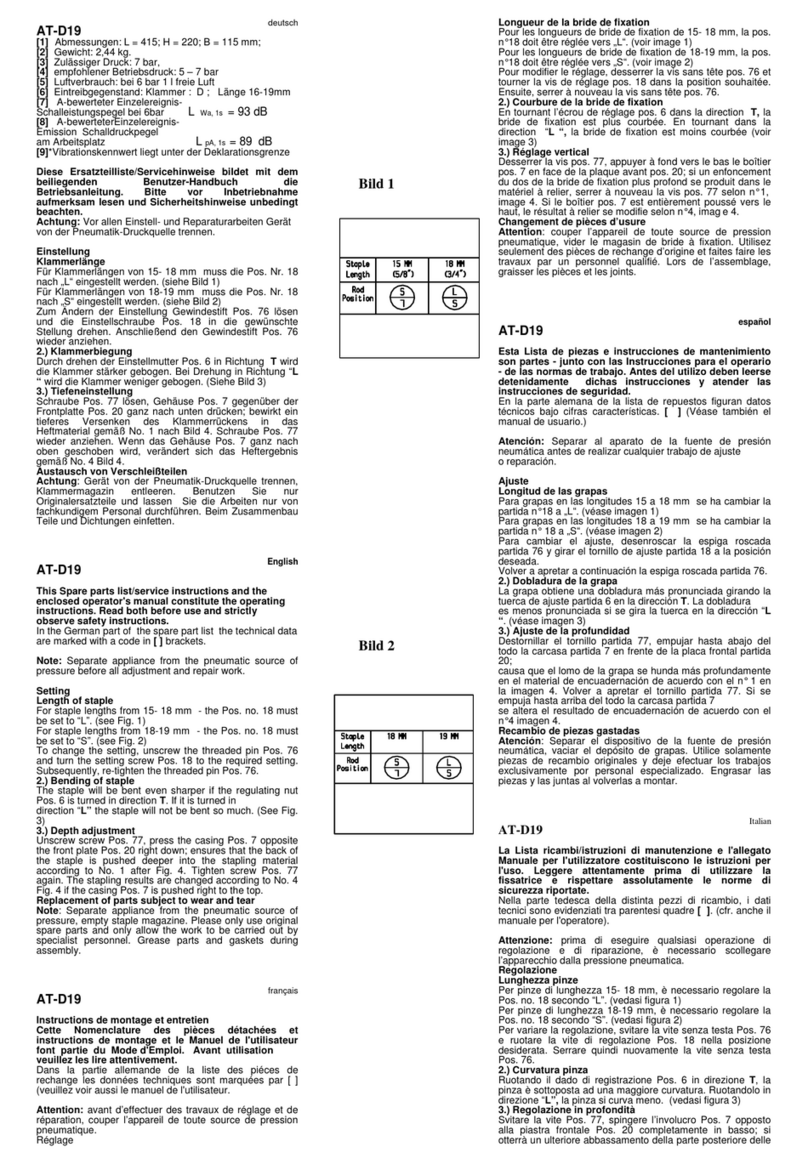
BEA
BEA AT-D19 Spare parts list/service instructions
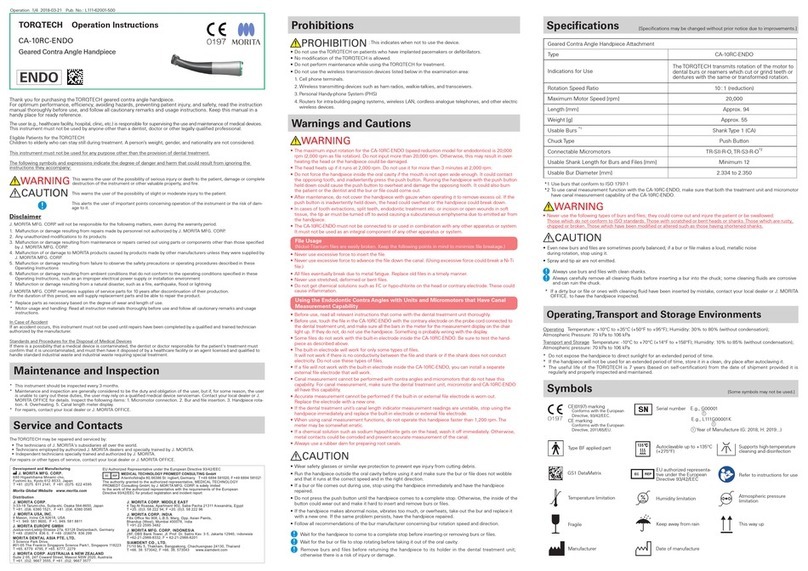
TORQTECH
TORQTECH CA-10RC-ENDO operating instructions

NIPPON POP RIVETS AND FASTENERS
NIPPON POP RIVETS AND FASTENERS PNT600 instruction manual

Southland
Southland S-HLT-3017-SBEZ-E Operator's manual
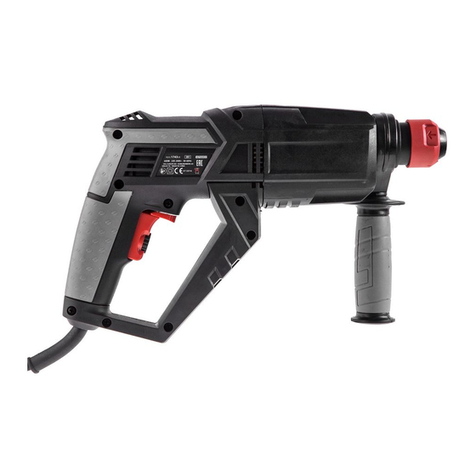
Skil
Skil 1743 Original instructions

Wera
Wera 8100 SB 11 manual
